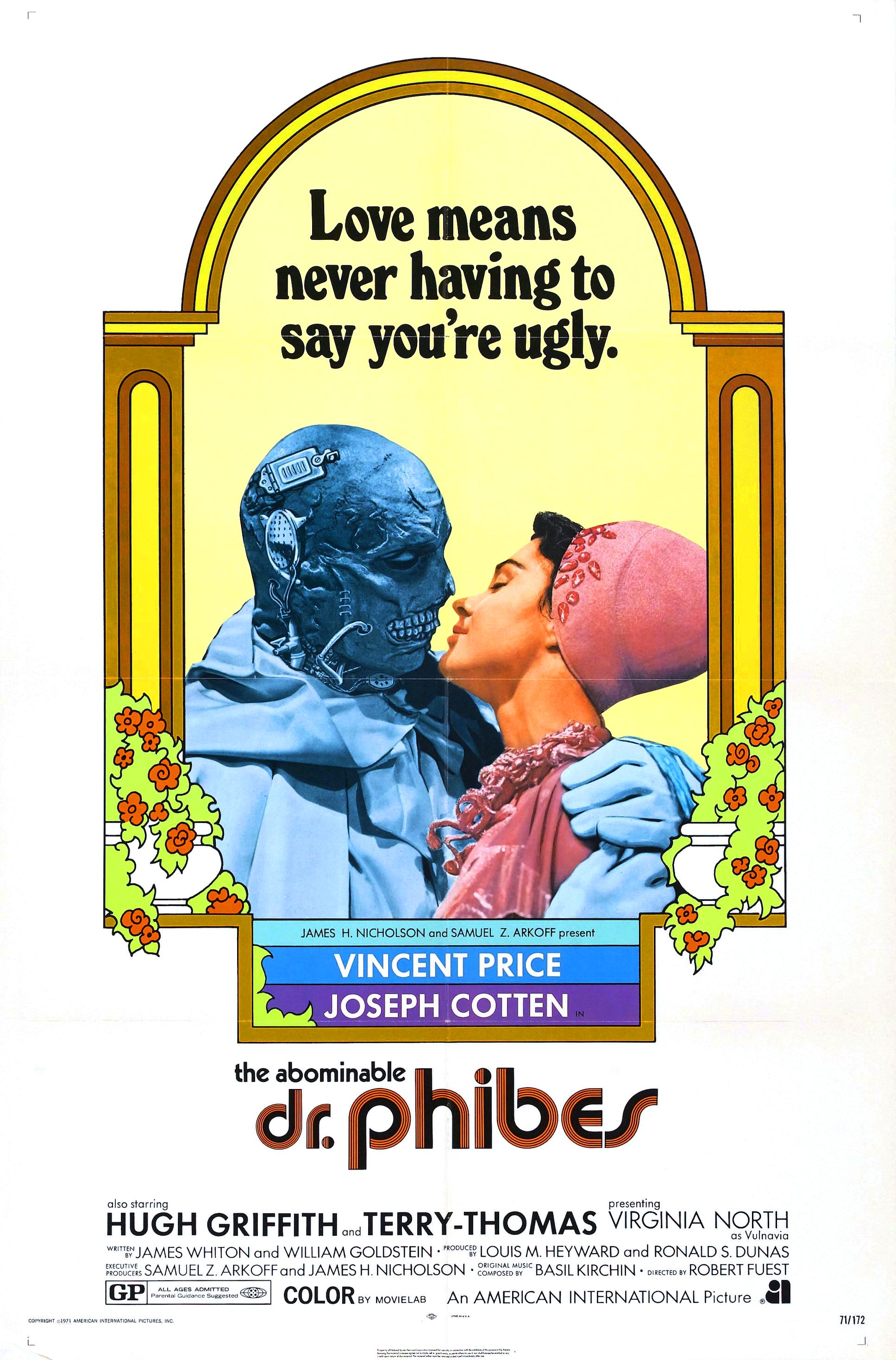From police procedurals to heists, American film noir and French policiers via South Korean serial killers, Criminal Record is a column delving into the rich and heady cinematic history of crime films. This time, a sharp into a proto-slasher starring Vincent Price
A bit of a left turn for this column. Directed by journeyman Robert Fuest in 1971, and starring Vincent Price, The Abominable Dr Phibes was marketed as a horror upon its release, with its campy, overcooked mix of gothic sets, grizzly kills and black humour. The film stands at a crossroads in British genre film production, with Hammer horror’s commercial heyday fading away, Italian giallo beginning to break through, and the grottier, sleazier times of 1970’s British genre production to come.
The film is structured like a police procedural, in the vein of Sherlock Holmes, with a police inspector taking much of the screen-time in his bit-by-bit uncovering of the dastardly plot of the titular Dr. Phibes (Price): a supposedly dead aristocrat looking to avenge the death of his young wife by killing off the surgeons who were unable to save her. Logically, his scheme involves parroting the biblical plagues visited upon the ancient Egyptians, with death via rat, locust, and so on.
By the time of the film’s release in 1971, the glory days of Hammer Horror as a major commercial force were generally over; the money-spinning franchises such as Frankenstein and Dracula had fallen into disrepair, and the more relaxed cinematic attitudes as a result of the Swinging Sixties and New Hollywood meant that explicit death and gore were becoming ever-prevalent on screen. Simultaneously, the giallo was coming to its commercial peak, spearheaded by Mario Bava and Dario Argento. The giallo genre, originally hewing more closely to murder mystery, was at this point already starting to look more like the slasher genre it would give birth – the lurid kills and stylish sets of The Bird With the Crystal Plumage (Argento, 1970) and Hatchet for the Honeymoon (Bava, 1970) replacing the more restrained, down-the-line crime elements that birthed the genre. In this, The Abominable Dr. Phibes finds itself in a British genre cinema that at the time wasn’t perhaps sure of its footing. The film is a mish-mash of different styles and ideas – although messy, it is gloriously fun.

The Abominable Dr Phibes comes at the tail end of Price’s box-office golden-era, his output slowing as the ‘70s drew on and he aged. His eponymous role here is certainly one of his most gloriously hammy – Dr Phibes, it is explained, was severely burned in a car accident and rendered mute, so he speaks through a pipe, with the audience hearing Price’s voiceover for his dialogue, whilst the actor on screen, caked in makeup, mostly glowers or shifts his adam’s apple up and down. Truly an amazing feat of actorly ability.
By this point, Vincent Price’s status as the king of gothic horror was well solidified. Though he had been acting since the late 30s he only really became the debonair, sinister villain of the popular imagination from about the mid/late 50s onward. His public perception first started to shift with his collaborations with William Castle (The Tingler and House on Haunted Hill) and then with his long working relationship with Roger Corman throughout the ‘60s, often on Edgar Allen Poe adaptations. This part of his career cemented his position as the go-to man for dastardly sinister plots.
But though Price gets top billing, much of the film is spent following Inspector Trout (Peter Jeffrey, an adaptable and dependable TV actor for most of his career) as he uncovers Phibes’ dastardly plan and acts to stop it. Rather than presenting him as a super-sleuth in the grand tradition of British crime, a la Sherlock or Miss Marple, his successes come more through perseverance rather than genius. He’s smarter than the establishment around him, including his superiors, the Chief Inspector and the Superintendent, both of whom have been promoted up to their correct level of incompetence and worry more about political fallout than solving the case.
Much of the film’s black comedy comes as a result of bumbling police, balancing out the grim murders with a streak of particularly British ridiculousness – the sheer ingenuity of Dr Phibes countered by the incompetence of British forces, who are mostly incapable of pronouncing his name (Fee-bez? Fibs?). It turns out to be the American surgeon Dr Vesalius (Orson Welles’ old friend Joseph Cotton) who saves the day. Perhaps this is a reach, but maybe this bumbling incompetence is an admission of Britain’s then-uncertain role in the world. Though the film is set in the 1920s, the film was released before the UK joined the nascent European Community in 1973, and after much of its empire had gained independence. Phibes is labelled as European aristocrat with a passion for lofty cultural tastes in theology and music; there’s a sense of a country unable to really keep up with the changes around it, led by a bumbling leadership, unable to combat ingenuity or answer it with smarts of its own, relying instead on outside help and support to keep up. Sound familiar?
Or perhaps it’s just a ripping gothic pulp film that takes genre elements and stretches them to a goofy, elevated proto-slasher, rooted in the tradition of the Scotland Yard sleuth but willing to send up institutional pomposity.


Leave a comment